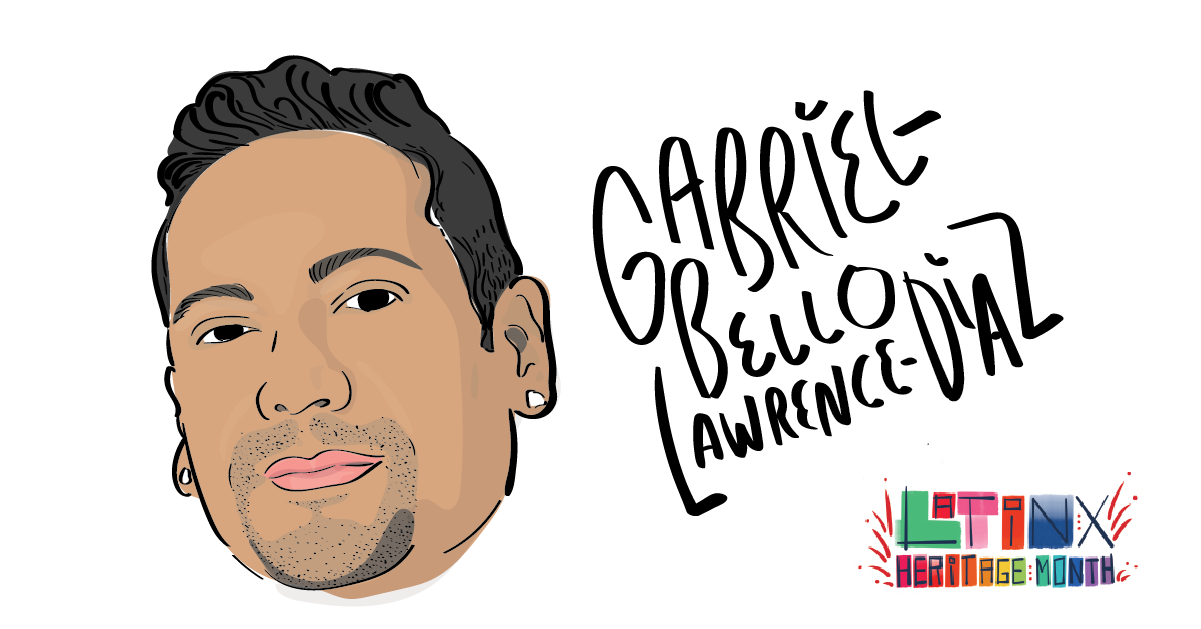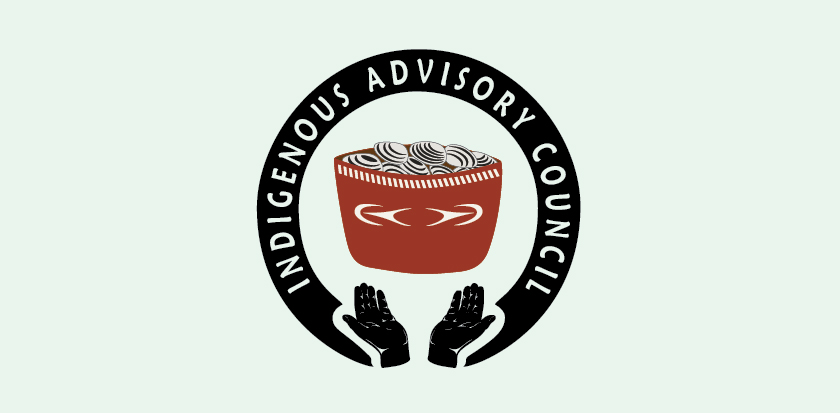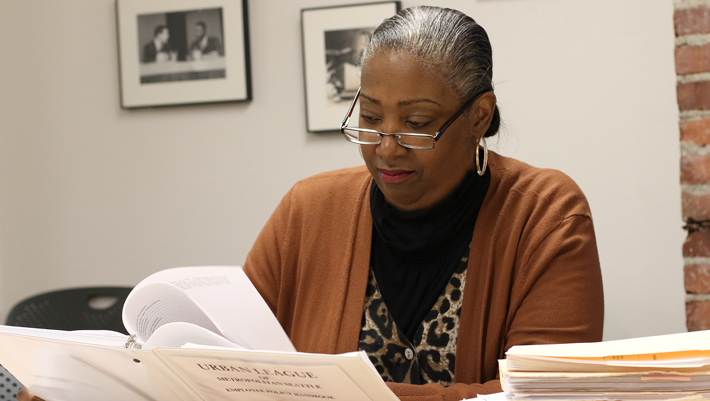
In celebration of Latinx Heritage Month, we are hosting a series of profiles and stories to amplify and honor people, businesses, organizations, and projects connected to Seattle’s Latinx community.
Let’s Start with Mofongo
by Gabriel-Bello Lawrence-Diaz
“Boriqua!” is what I yell with pride. Coming to Seattle was an unexpected exploration of my identity that I didn’t know I was looking for or needed. It crept from my peripheral to a magnetic bullseye of purpose. This wasn’t a distraction or deviation from my career path or goals in life. Rather, it was a layer of my life that I was living without. Since I left home at eighteen, I would cook Puerto Rican food from memories of growing up. It started with arroz con gandules con peril, to the obvious and still current tostone obsession, and I eventually started making harder dishes like pastelón (Puerto Rican lasagne), one of my favorites! Making these dishes went beyond a craving. They activated memories of growing up in Camden, NJ and eating with family. From my tias y abuelas house, to our everyday meals where cousins would be stopping by and sometimes staying with us for various amounts of times, we were fed. We were always around a table that spilled into the living room, depending on your age, with everyone seemingly yelling at each other. But, we were really just excited to be in each other’s company and sharing all the bonchinche. Even though I was the youngest kid and couldn’t speak Spanish like everyone else, none of that mattered. I was shown an abundance of love, and the smell of our food always brought me back to that.
When I left for Boston to pursue my undergraduate degree, I spent a year without Puerto Rican food while living in the dorms. This was not the life I wanted. That summer I decided to leave the dorms and get an apartment, mainly because those dorms were absolutely gross, but also because I wanted to have a kitchen. Cooking in my little Boston apartment with roommates who had never eaten Puerto Rican food was a trip. Comments like “this is an interesting kind of spicy” or “really?? olives in rice?” were welcomed because they allowed me to share stories of how our food is made and the memories that came with them. When I moved from Boston and began traveling abroad in the United Kingdom and Germany, it was more difficult to get certain ingredients. It became more apparent that eating Puerto Rican food was one of the most important things to me in life. I was no longer content having a reminder of a flavor that was “close to” Puerto Rican savor. I did not want to just eat a cute meal on a holiday but needed access to plantain weekly or at least a biweekly dose of rice and beans. At a minimum.
Coming to Seattle it was clear that there is an extra acknowledgment of Native American tribes and a true history of how Natives have been treated. Even though these statements are sometimes created with a condescending tone or seem performative, there is, nonetheless, a community here that authentically supports and educates the local population about the land we are standing on. Being here and seeing the complexities of these conversations inspired me to really understand the dichotomy of being Puerto Rican. An obstacle for me was seeing the difference between access to historical knowledge here in the Pacific Northwest versus the Caribbeans. I started reading books that focused on Taino history within my first year of living here. Reading our history is like reliving an ancestral nightmare of death, rape, grief, greed, and sadness. Arawak-Taino-Borkien identity is complex when mixed with the history of Spanish enslavement of Africans, the erasure of Indigenous identity through the centuries, and the current support of systemic racism in our society. While I was not blind to the harshness of this research in understanding other depths of my identity, I was also looking for another way to explore this in my life. While collecting documentation of Taino traditions, symbols, language, and textiles, I explored them as an artist through various art forms like virtual reality, 3D printing, laser cutting, fashion, and painting. I came to a point where I finally realized that I wasn’t searching for new and innovative art exploration. There already was one art form that drew me back to my culture since first stepping out into the world alone: Food.
Comida became the avenue that allowed me to dissect the traditional dishes I was familiar with and research the history of these flavor profiles. My sister and I did our ancestral charts and that provided some “percentages and locations,” but focusing on food this way began telling another story. I decided to design and build a leather-bound family book to begin collecting these dishes and writing about their connection to us. If you know me, then you know platanos are my favorite food and mofongo is by far my favorite Puerto Rican meal in the world. This is when you dice your green plantain into one-inch pieces, fry them until golden brown, and then, in a pilon, or a wooden pestle, mash a few pieces with fresh garlic, salt, and oil into a ball. Put it in a bowl and top it with your favorite stew. This is a very simplified version of a dish that traveled from Angola to Puerto Rico by slavery in the 1500s. Many books and articles began making these connections for me, and I saw a path for myself to dive deeper into my culture through food in a way that became comforting.
When prompted to participate in the Seattle Department of Neighborhoods’ Latinx Heritage Month, there were many narratives I wanted to share, but “Let’s Start with Mofongo” is something in me that I am proud to share. Many of us still hold on to the experience of navigating the frustration of being mixed-race kids. Even within our specific cultures like being Puerto Rican, mom being Afro-Caribbean, and father being Portuguese-Caribbean, our identities are heavy and complicated. Leaning on my memories of food as a way to connect to the historic narrative of my family and my people is magical, and I can’t wait to pass down my book to my family to keep adding to it.



